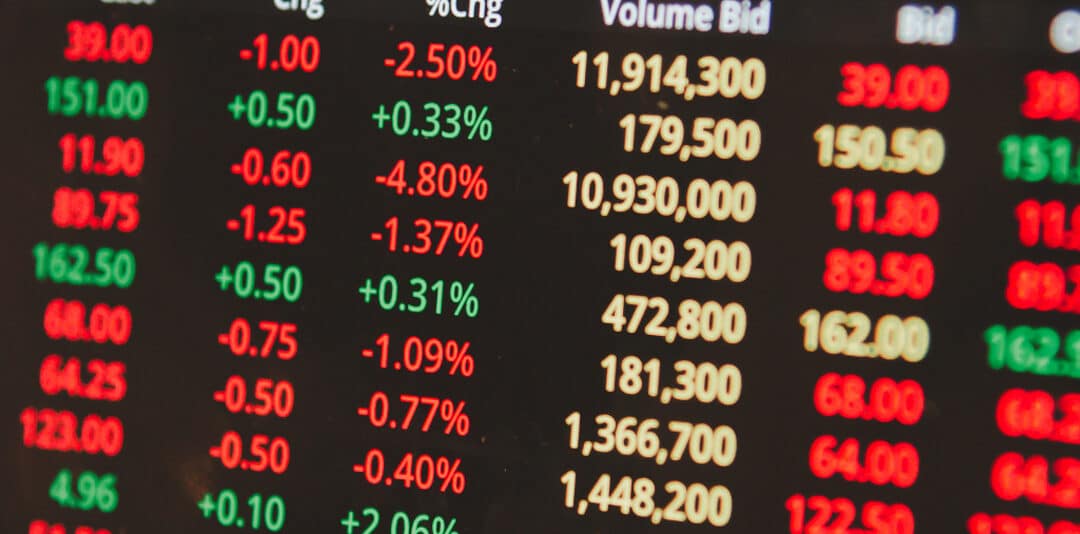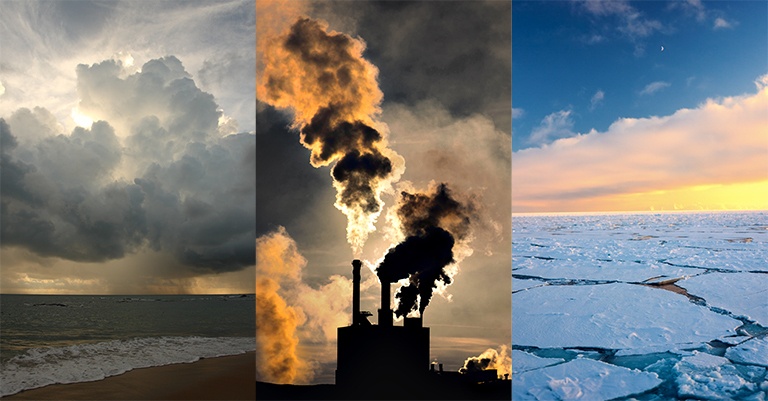
by RichardGardiner | Aug 4, 2018 | Energy
Until now, articles on the Total Utilities website have always been of direct relevance to the utility markets where we have operated since 1999.
In this case, we have included Jonathan Eriksen’s latest quarterly investment commentary below because it puts in wider New Zealand and global context the macroeconomic trading conditions that impact directly and indirectly on the utility providers in New Zealand.
I have an economics background and have known Jonathan since I emigrated to New Zealand 25 years ago. He is one of the leading actuaries in the country and his independent investment advice track record is second to none in my opinion.
The relevance of this advice to future trading conditions in the local ‘energy’ sector is very clear cut. Global energy market trading conditions are becoming more difficult due to well-publicised political factors including but not limited to the ebbs and flows of the Donald Trump Presidency. The New Zealand dollar exchange is weakening versus the major currencies overseas. We have a small, remote niche economy which has nonetheless been consistently successful over the past 20 years.
Focusing on the Liquid Petroleum Gas (LPG) side of ‘energy’, we have an energy source which is non-renewable but which is far ‘cleaner’ than other non-renewables like coal and diesel. Global demand for LPG is growing. There is a great opportunity for LPG to replace coal and diesel locally during the coming 30 year period. However the Government’s recent ill-advised (in my view) prohibition on all new offshore oil and gas exploration will inevitably constrain future local LPG supplies and hence force us to import more. This in turn will increase the proportion of imported LPG (particularly in winter) and hence increase our exposure to LPG price hikes driven by global political and economic forces in general and the Saudi Aramco Index in particular.
Investment Returns
The NZ Consumer Price Index rose to 1.5% for the one year to 30 June 2018. This was mainly driven by housing, construction, and food price increases. Inflation over the past ten years fell slightly to 1.6% p.a.
A number of funds within the Aon Master Trust were added over the quarter, raising FUM by $45 million. Total Master Trust FUM increased by $280 million over the quarter. Funds with a higher proportion of growth style assets (eg shares and property) had the best investment returns for the year to 30 June 2018.
The one year weighted average return for all Master Trust Growth funds was 10.6%; Balanced funds 8.1%; and Conservative funds 5.0%. Single Sector Aggressive funds returned 12.0% over the past year on a weighted average basis, while Defensive funds returned 1.8%.
Economic Commentary
The Trump administration demands to end all imports of Iranian oil have put pressure on prices as some key buyers, namely India, South Korea and Turkey look to source oil from elsewhere. The effects of the restricted supply pool are evident with oil prices still rising. However, it is unlikely that major importers will be able to switch suppliers entirely – at least by the proposed deadline of November.
Here in New Zealand, we are seeing our dollar depreciate. International trade uncertainty is one catalyst of this. During times of uncertainty, demand for riskier assets diminishes and the Kiwi dollar is viewed as a relatively ‘risky’ currency compared to many larger economies with more liquidity in their currency market from more transactions. This month, Reserve Bank Governor Adrian Orr released a statement that the OCR would remain unchanged at 1.75%. Also given acceptable inflation and employment levels, we can expect growth-supportive monetary policy for some time.
The effects of oil prices, petrol taxes and a weaker currency will flow through to domestic prices. CPI inflation is expected to rise to meet the target midpoint of 2%. However, escalating trade tensions between the US and China are beginning to give investors cause for concern as they could lead to even higher inflation disrupting the global economy. Energy market players are looking at rate hikes by the US Federal Reserve to quell this inflationary pressure. The ripple effect will eventually hit us, resulting in the RBNZ raising the OCR.
The expectation of higher short-term interest rates is supported by the US 10-2 yield spread curve which is at its lowest point since the 2008 recession. Bond investors are becoming increasingly more comfortable accepting lower yields for longer-term bonds. Historically, significant troughs in the yield spread have been followed by an economic slowdown. This was the case in both 2001 and 2007 (although it is not always the case).

The past does not always offer accurate predictions of the future, but there is some evidence in support of less optimistic economic forecasts going forward. The changes in investor sentiment and outlook over this calendar year are particularly relevant.
Last year the world enjoyed synchronised growth, low inflation and stable low interest rates which supported economic expansion. Oil prices below $60 a barrel was considered sustainable and reasonable.
This year the price of Brent Crude has reached $75 a barrel, interest rates in the US are projected to continue to rise steadily and inflation is starting to rise. This is worsened by the beginning of trade wars which can only increase consumers costs. They also raise geopolitical tensions and may derail global trade.
In this current climate of low interest rates and weaker currency in Australia and New Zealand, overseas buyers have pushed up share prices. Our equity market offers attractive dividend yields at relatively lower price to earnings ratios. In other words, you get more bang for your buck. The inflow of foreign capital will help companies grow while people are buying. Conversely, it would be potentially harmful to equity markets should they sell their positions. However domestic inflows from the SGC (compulsory Super in Australia) and KiwiSaver are also supporting local markets.
KiwiSaver
Over the past few years funds with a higher proportion of shares and property have seen some stellar returns. This has led to a number of investors who are invested in the more conservatively invested funds to ask: why their returns are so much poorer in comparison; and whether they should switch to a more aggressive style fund to begin reaping these same rewards. Our response is this: hindsight is a wonderful thing! We suggest to investors who have invested more prudently over the past few years to avoid a switch to growth options now. There would be nothing worse than jumping into a fund with a riskier asset allocation profile, after years of investing cautiously, to find that the markets take a dive just as they make the switch. After 30 years of falling interest rates and almost a decade of rising stock markets a correction will certainly happen. The only question is whether it’s this year or next?

by RichardGardiner | Jul 24, 2018 | Energy
This excellent article in Energy News says it all for me. A reality check which deserves to be published in the mass media!
Unlike New Zealand politicians who are only interested in scientific research that validates their particular view of the world, this acclaimed Cambridge University academic knows what he is talking about and has no ideological axe to grind on Climate Change.
– Richard Gardiner, Managing Director, Total Utilities.
The following article was originally written by Gavin Evans and published on Energy News
Michael Kelly has nothing against walkways and cycle paths. Public transport also has a lot of benefits, but none are great options for New Zealand to be looking at as emission reduction measures, the UK-based technologist says.
There may be a lot of arguments for building a rail line from central Auckland to the city’s airport but it won’t do anything material for emissions, he told regulators and industry executives in Wellington last week.
New Plymouth-born Kelly, Emeritus Prince Philip Professor of Technology at the University of Cambridge, is frustrated by the absence of intellectual rigour in the responses being proposed to climate change.
The world does not have unlimited resources to throw at the problem and — as an engineer — he wants to see initiatives and options developed that deliver the biggest “bang for the buck.”
What he sees instead – here and overseas – are wish lists.
“There is so much of what I regard as a lack of engineering integrity in the debate, which really actually makes me angry and sad.”
Real action on climate change
Kelly wants to see action taken against climate change – but he believes the cost, the time-scales involved, and the uncertainty of some of the science – favours more of a focus on adaptation than mitigation.
For New Zealand the Productivity Commission’s focus on afforestation of marginal farm land is compelling and should be the main focus of further studies, he says.
The next priorities should be on research and development to reduce methane emissions from stock, and ways to increase exports of processed wood, thus extending the duration of emissions captured in timber.
But many of the other recommendations of the commission, and most of those of the Royal Society of New Zealand in 2016, are “futile gestures” he says. They are either too costly, unworkable, or – in the case of increasing renewables in power generation or reducing domestic coal use – already happening without much intervention.
Promoting walking, cycling and use of public transport are all positive for other reasons, but the emission reductions are small and only make sense in very dense cities. Kelly estimates the cost of the carbon saved here from such measures at more than $500 a tonne.

Auckland – Photo by Bernard Spragg
Kelly notes that in densely packed Tokyo, 90 per cent of all journeys are by public transport. In New York that figure is down to 55 per cent; in Los Angeles – 10 per cent.
“Which of those is Auckland most close to?”
Urban sprawl similarly reduces the convenience of walking and cycling for much of the community.
“As soon as you have a very large city, walking and cycling becomes a minority interest,” he told the seminar hosted by Spindletop Law in Wellington.
“I don’t mind putting cycleways and anything in for other reasons – but if you say you are doing it to reduce carbon emissions then you are just burning money.”
Social change
Kelly’s fourth recommendation for New Zealand – surprisingly – is a “serious national programme” to change community attitudes to profligate consumption.
Climate change, he says, is being driven by massive population growth and urbanisation in developing countries.
Anything New Zealand does is almost irrelevant at a global scale. He likens it to digging a hole with a spade and having people with wheelbarrows fill it in behind you.
But Kelly says individual choices do matter and social mores can be changed at relatively little cost.
He cites the change in attitudes to drink-driving, smoking in public spaces and unprotected sex since he left these shores for the UK in 1971.
“What we have got to do is get the idea that profligate use of resources is deeply anti-social.”
He’s not talking about banning cars, although greater aerodynamic design would greatly improve their efficiency.
But what if community attitudes changed so that people jeered at Lamborghinis and their owners instead of leering at them?
“We wouldn’t, as we do in Cambridge now for six weeks every winter, have this huge ice rink with huge pumps, making sure the ice stays frozen so we can go skating in Cambridge over Christmas.
“We wouldn’t do that sort of thing if we had an attitude that using energy for profligate use was anti-social. That is probably the biggest single thing we could do.”
People central to climate change
And at its root, the climate change problem is people – the growing world population and what it takes to lift those in developing countries out of poverty. Trying to do that without increasing emissions brings you head to head with the declining energy return that investment in renewables delivers – relative to energy-dense options like hydrocarbons and nuclear.
The day after Kelly’s presentation, the International Energy Agency reported on progress on the UN’s Sustainable Development Goal 7 – universal access to reliable, affordable, sustainable, modern energy by 2030.
While electrification rates in Africa – where 600 million live without power – overtook population growth for the first time last year, progress on all four of the UN’s targets are lagging.
At current rates, 8 per cent of the world’s population still won’t have power in 2030 – an improvement from 13 per cent in 2016. Lack of access to power, LPG and natural gas means that in 2030, 27 per cent of the world’s population still won’t have access to clean cooking – compared with 41 per cent in 2016.
And renewables – including ‘traditional’ use of biomass – will only account for about 21 per cent of final energy consumption in 2030, up from 17.5 per cent in 2015. Less than 10 per cent of demand that year was met by ‘modern’ renewables.
“Progress has been challenging, particularly in developing countries where energy consumption continues to grow rapidly, and modernising economies substitute fossil fuels for traditional uses of biomass,” the IEA said.
“Despite major investment, it has been hard for renewable energy expansion to keep pace with growth in energy demand.”

It’s a conundrum and at a scale few recognise, Kelly says.
China, where 600 million people have gained power or shifted to towns and cities in the past 15 years, already accounts for a quarter of the world’s emissions.
The belt and road project – a highway and high-speed rail link to be built between Beijing and Vienna during the next 20 years – will lift about two billion people along its route out of poverty, Kelly says.
The project, also involving development of 700 coal-fired power stations, will treble China’s emissions by 2050. By that stage emissions from China and its broader interests will be 500-times New Zealand’s current emissions.
Kelly struggles with what he calls New Zealand’s “gung-ho” determination to take local action on climate change when “it isn’t going to make a blind bit of difference.”
If “precious New Zealand dollars” are to be spent, they would be more effective funding a programme to get people in China to raise their central heating thermostats by 2 degrees during summer.
“What you would save there would dwarf anything that you do here.”
China may be leading the world’s investment in wind and solar, but its use of coal will fall only slightly during coming decades.
And that just reflects the scale of energy demand growth and the relatively low energy return from some renewables.
Global energy demand increased by about 40 per cent during the past 20 years and could increase by the same percentage in the next two decades, Kelly says, citing BP projections. And while renewables and gas are expected to show the greatest growth, by 2035 coal would still be the world’s third-largest source of energy after oil and gas.
Kelly says New Zealand – and Norway – are rare in that they each have low density populations and a lot of hydro – a renewable that delivers a relatively high energy return on the cost required. New Zealand also has geothermal.
Most countries don’t have those options. And the wind and solar that is being developed around the world has a far lower energy return on the energy used to build them – compared with more energy dense hydrocarbon options, nuclear or large-scale hydro.
It’s an issue recognised by others. Last month, HSBC specifically included coal-fired generation development in Bangladesh, Vietnam and Indonesia among its permitted coal-related investments. To do otherwise would be to ignore the real energy needs of those communities, it said.

Archival photo of Meremere coal-fired power station, New Zealand – Photo by W. Cleal
Kelly says people tend to look at the scale of China’s investment in renewables as some sort of “beacon of hope” without also recognising its on-going investment in coal, gas and nuclear.
“So this idea that somehow around the corner we are going to be having a new age of renewable energy is just simply nonsense.”
“Renewables do not come close to constituting a solution to the climate change problem for an industrialised world.”
Kelly observes that about 40 per cent of the world’s emissions still come from the smoke stacks of coal-fired power generation. Currently that CO2 can be extracted at a cost of about USD $60 a tonne to USD $90 a tonne. By 2025 those figures could be down to USD $25 to USD $40.
Promoting other options costing five to 10-times those figures is simply “burning money,” he says.
But all these initiatives also come at a cost to energy productivity and Kelly is concerned people haven’t thought about the long-term consequences of that.
Energy determines quality of life and intervention should only be pursued in the clearest of cases, he says.
And the energy system accounts for about 9 per cent of the global economy.
CO2 extraction reduces the efficiency of coal-fired plants by almost a fifth – taking their performance back to 1960 levels.
But the impact of lower-returning renewables could be more stark.
Productivity decline?
Kelly cites studies of Spain’s investment programme in solar in the 2009-2012. Even assuming free panels, the projects over their lifetime will deliver only five-times the energy that was used to build and operate them.
That’s in contrast to the 10-times return from a coal-fired plant, or 15-times for a gas-fired plant in the UK.
Kelly says there is an established correlation between a community’s energy productivity and the health, education and cultural benefits it can provide.
“The world is running on 11-1. We don’t notice this at the moment, but once solar energy becomes a large fraction of the total energy mix this is going to show up as a lack of productivity and nobody seems to discuss that.”
Another factor that may temper the take-up of renewables is the expectation that more than half the world’s population could be living in dense megacities by 2050.
In those communities, rooftop solar can’t deliver enough energy for all those dwelling in high-rises. Land surrounding cities like Beijing, Hong Kong, Singapore, Moscow, Rio de Janiero, London and Calcutta may also be too valuable for agriculture to give it up for solar arrays and wind turbines.
Kelly is optimistic new food technologies – like aeroponics – will ensure that the world’s megacities are self-sufficient for at least basic food stuffs.
They are also where the world should put its focus for emissions reduction, but he’s not sure renewables can play a big part in that.
He believes nuclear energy and fossil fuels will remain the mainstay for them. Carbon capture and storage may be an option, but it does reduce generation efficiency, its development is slow and it remains unproven at scale.
Given the impacts of climate change have not been as severe as some predictions during the past 20 years, Kelly says his “greatest hope” for the megacities, and the globe generally, lies in a demographic change underway for the past 40 years.

Everywhere where there is universal primary education and more people live in towns and cities the local population is in decline – where the average number of children per family falls below 2.1.
Kelly notes that in Italy the rate is down to 1.2 and in Germany 1.4. In Botswana and southern India the rates are nearing 2.2.
The UN is picking the world population to reach nine billion by 2050. But the rate of growth is slowing and in some models the range of potential outcomes includes a decline soon after.
“The chance is that in 2150 the population will be seven billion and going down – that is the answer.
“The change in the world demographic now is going in our favour,” Kelly says. “It’s a matter of getting through the next 30, 40, 50 or 60 years.”














